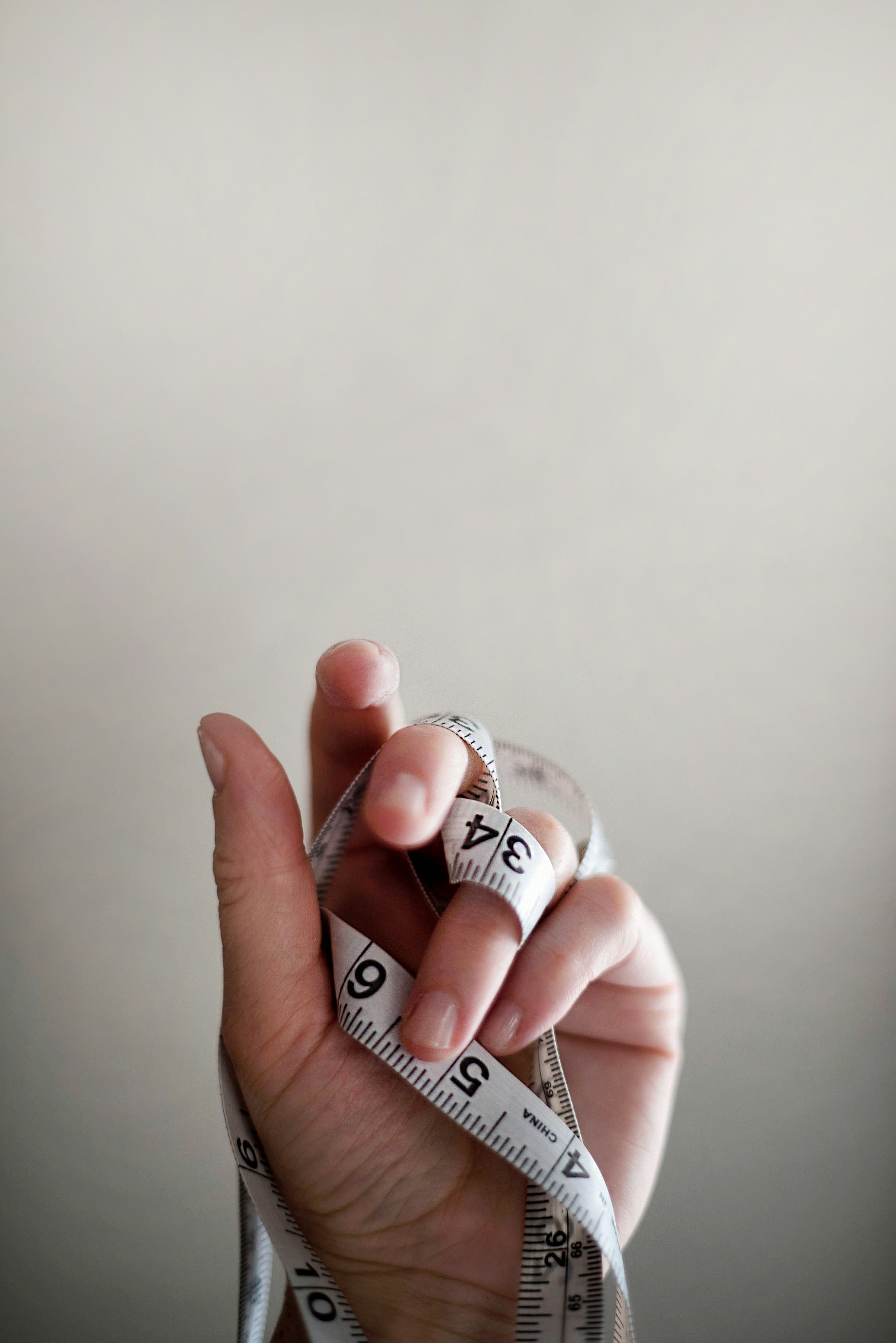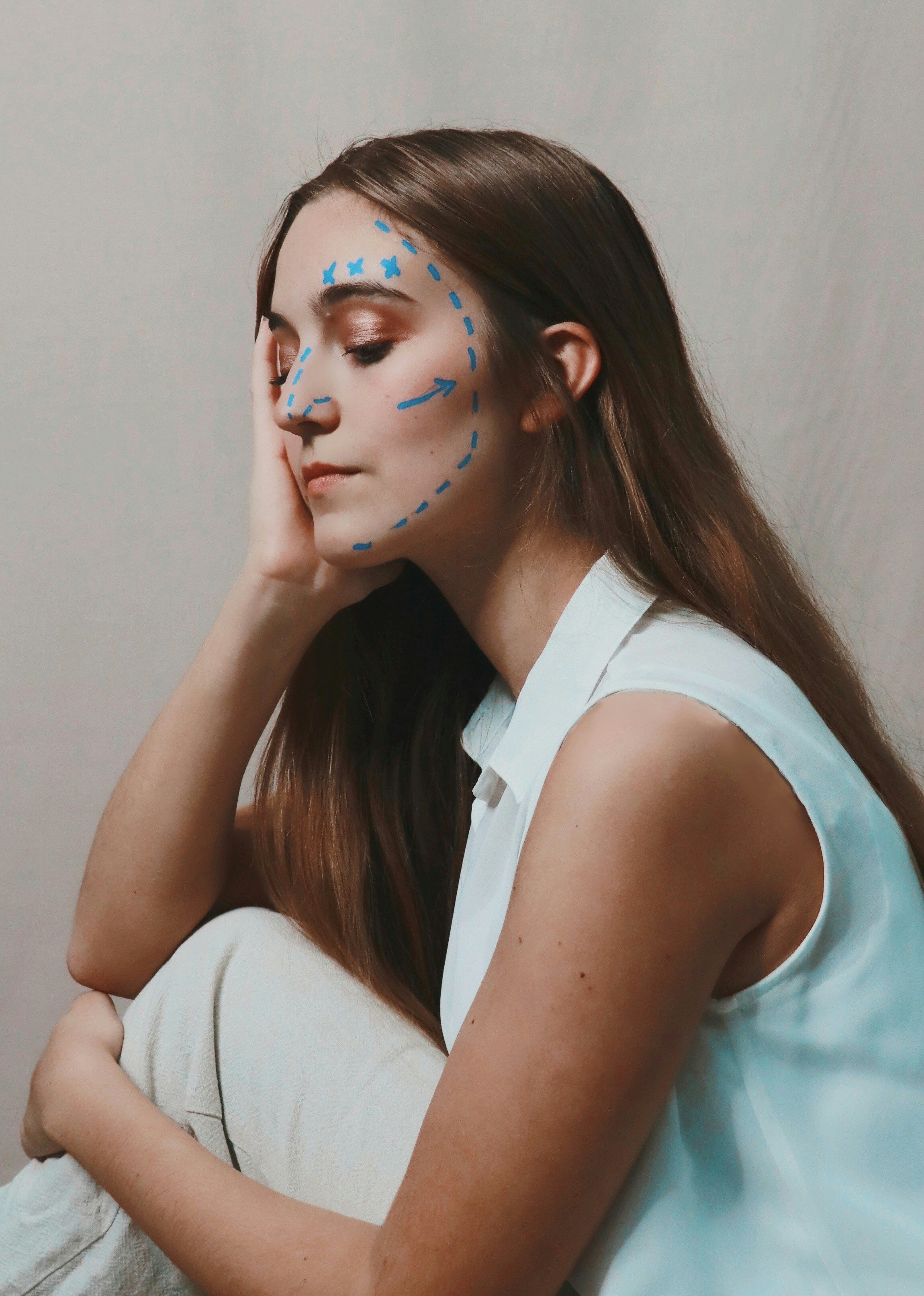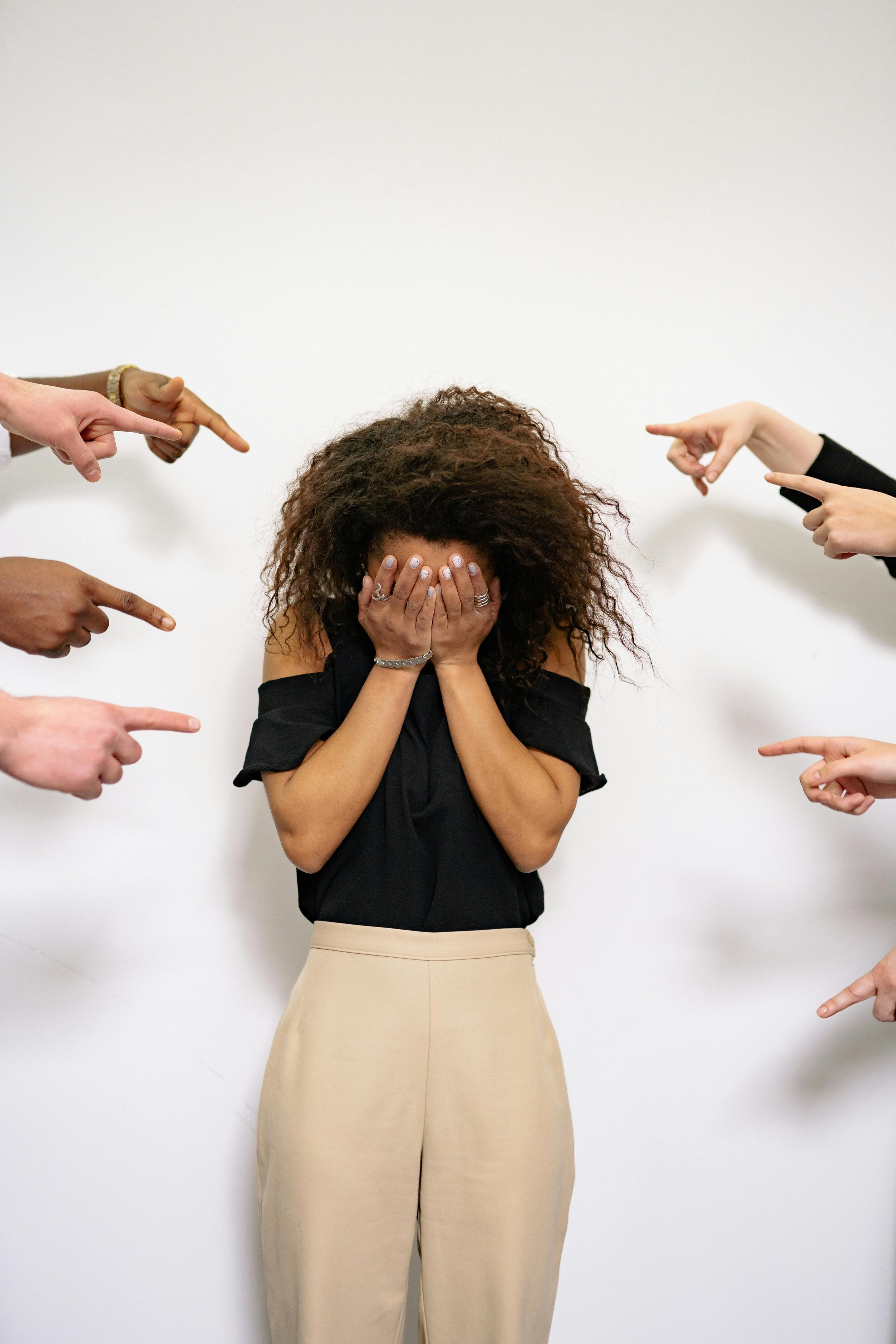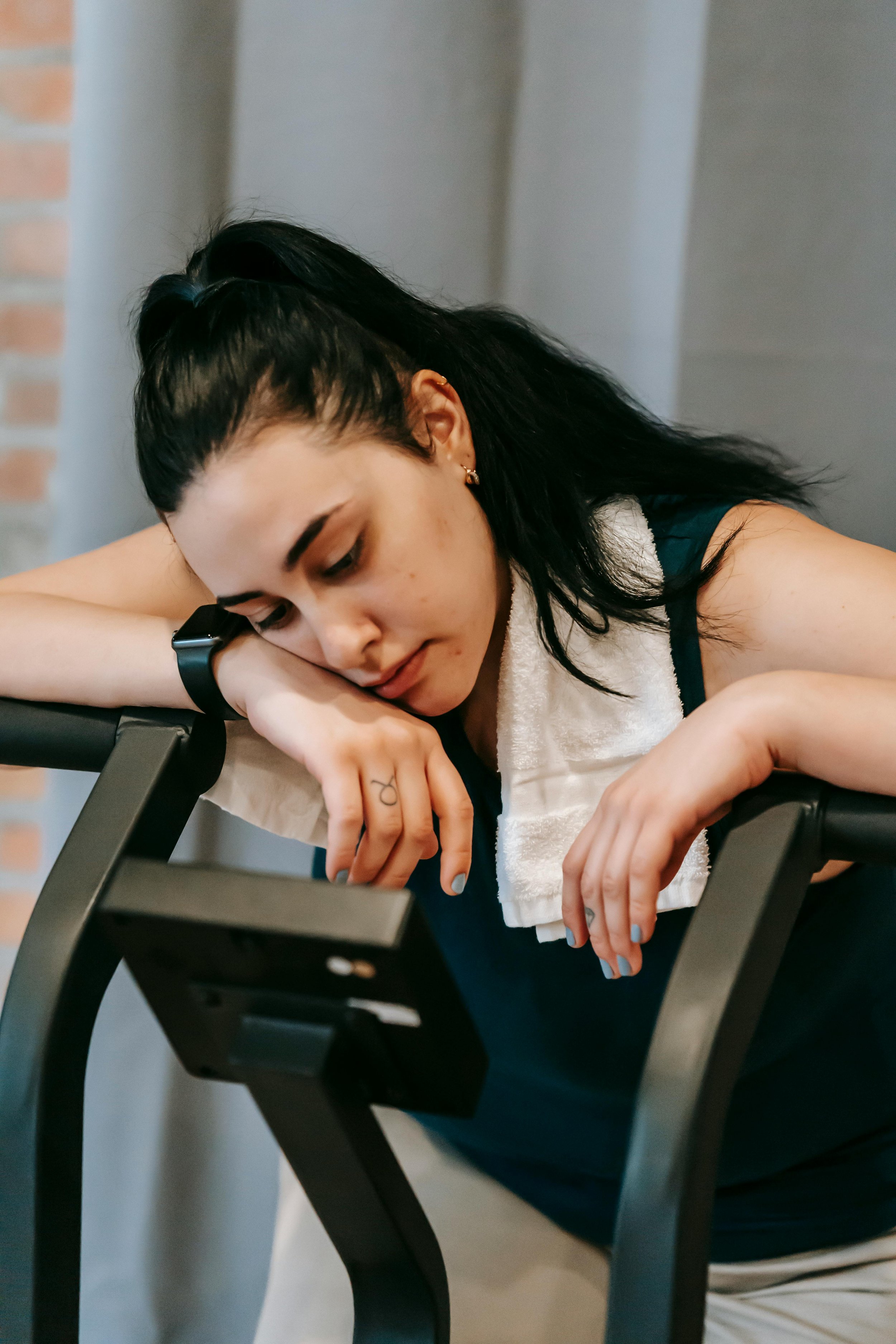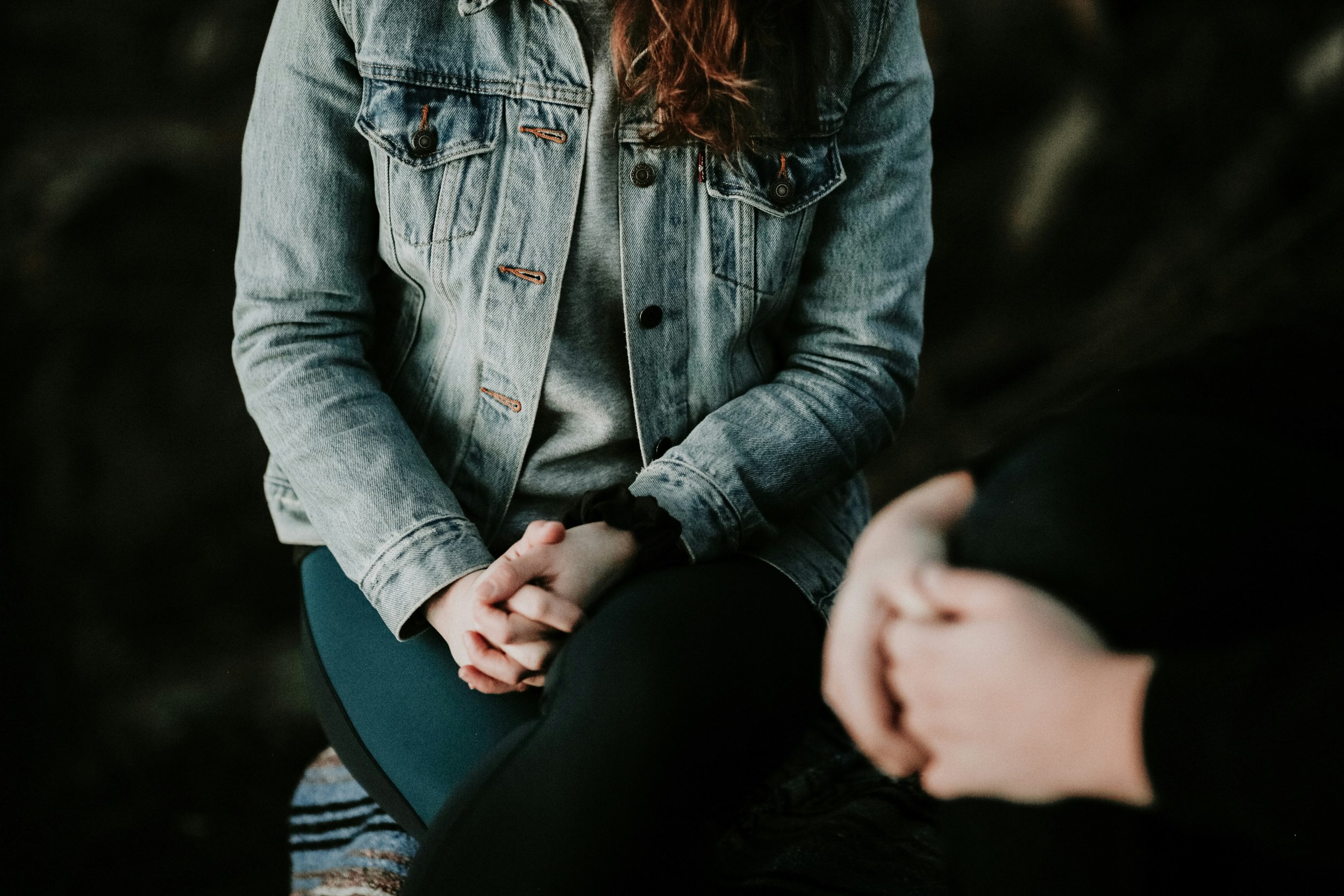The Link Between Social Media and Body Image Issues Among Youth in the United States
Photo by Carolina Basi
By James Krzymowski
Published Winter 2024
Special thanks to Becca Linford for editing and research contributions.
Viewpoints published by Ballard Brief are not necessarily endorsed by BYU or The Church of Jesus Christ of Latter-day Saints.
Summary+
Social media has a pervasive impact on body image in the United States, influencing one’s mental, physical, and social health. Body image issues encompass negative feelings and experiences related to one's physical appearance and are characterized by a preoccupation with perceived physical defects. This occurrence is especially common among youth. The harmful effects of constant exposure to idealized images, unrealistic beauty standards, and the influence of social media influencersIndividuals who use social media as a platform to interact with an audience by promoting products, sharing information or opinions, and entertaining their audience or followers. are wide-ranging and severe. This brief focuses on the United States because of the competitive culture, the high cosmetic surgery rates, and leadership in social media use. Contributing factors such as comparative culture, social comparison theory, and the impact of influencers are all responsible for the spread of social media’s negative effects. Negative consequences include risky health behaviors, depression, anxiety, eating disorders, and the correlation with suicidal thoughts and attempts. The social impairments, such as interpersonal problems, low self-esteem, and bullying, are correlated to barriers to social connection. Interventions such as CBT therapy are being implemented to help the youth of America adapt to healthy habits of social media use and improve their self-image. By implementing professional therapy, there is hope that we can increase the benefits of addicting technology and minimize its harmful outcomes.
Key Takeaways+
- Forty percent of teens reported that content on social media caused them to worry about their image.1
- There exists a notable correlation between when kids receive their first phone (12–13) and the onset of Body Dysmorphic Disorder (also ages 12–13).
- As a result of excessive exposure to social media, teens who view themselves as very fat or very skinny are twice as likely to attempt or think about suicide than their “normal weight” peers.2,3
- Over 7% of adolescents and young adults in the US were at risk for exercise addiction because of a high use of social media.4
- Cognitive Behavioral Therapy (CBT) has been shown to greatly reduce the negative effects caused by social media and assist in the healthy incorporation of media in the lives of youth in the US.
Key Terms+
Comorbidity—Refers to when someone has multiple existing conditions simultaneously. In the context of this brief, this includes mental, physical, or other health conditions.5
Feedback loop—This is the process of social media users’ responses to determine which content gets results and what appears on their media feed.6
Internet addiction—A behavioral addiction that occurs when someone becomes dependent on the Internet or other online devices as a maladaptive way to cope with life’s stresses.7
Neuroplasticity—The brain's capacity to continue growing and evolving in response to life experiences. Through the process of creating new neurons and building new networks, the brain is shaped, molded, and altered.8
Social media—Social media is broadly defined as media accessed through personal electronic devices to interact with others online. For this brief, most of the research includes sites such as Facebook, Instagram, TikTok, Twitter, YouTube, Pinterest, and Snapchat.
Social media influencers—Individuals who use social media as a platform to interact with an audience by promoting products, sharing information or opinions, and entertaining their audience or followers.
Subclinical symptoms—Low-level or short-lived mental or emotional drawbacks that are serious enough to affect people’s personal and professional lives but not so obvious or sufficiently severe to qualify as a diagnosable disorder.9
Context
Q: What is the difference between body image issues, body dysmorphia, and body dysmorphic disorder?
A: Body image issues refer to a broad range of negative feelings or experiences surrounding someone’s interaction with their own body and the way they see themselves physically.10 The two core components of body image are the mental picture that someone has of their physical body, such as their shape, size, and appearance, and the attitude they have towards their physical self, such as their thoughts, feelings, and beliefs.11 Problems with body image can be experienced in the mind (such as obsessing over calories), felt by emotions (such as anxiety or depression), or a combination manifesting into actions (such as skipping meals because of weight anxiety). These problems can be demonstrated in a number of ways, such as disordered eating, lower self-esteem, relationship problems, body dysmorphia, and Body Dysmorphic Disorder (BDD).12
Photo by Hannah Xu from Unsplash
Body dysmorphia is characterized by a distorted body image but is considered to be less disruptive or severe than BDD.13 There are levels to the severity of body image issues: the lowest level is negative (or distorted) body image, then body dysmorphia, and, in extreme cases, body dysmorphic disorder.15 The difference between these categories is derived from the severity of an individual’s ability or inability to regulate their beliefs about their body image and their subsequent actions because of those beliefs.15 According to the Diagnostic and Statistical Manual V (DSM-V), cases that do not meet the full criteria for BDD may still suffer many of the same consequences as those with BDD, though their symptoms are considered subclinicalLow-level or short-lived mental or emotional drawbacks that are serious enough to affect people’s personal and professional lives but not so obvious or sufficiently severe to qualify as a diagnosable disorder..16 While there is a range of severity in body dysmorphia, only the most severe cases receive a diagnosis.17
The most extreme case of body dysmorphia is Body Dysmorphic Disorder (BDD). This eating disorder is defined as the preoccupation with an aspect of one’s physical appearance that is perceived to be defective in some way.18 This preoccupation or obsession negatively affects daily living and disrupts typical functioning, such as spending large amounts of time examining oneself in the mirror, changing clothes repeatedly to hide perceived flaws, covering one's face during social interactions, and shaming oneself because of physical appearance.19
Although BDD can be generalized as a distorted view of one’s entire body, it is typical that individuals primarily focus on specific body parts.20 For women, the most common are hips, breasts, nose, legs, stomach, and facial skin.21 Men are more preoccupied with their genitals, body fat composition, and hair loss. In general population studies, BDD diagnoses are more common in women (60%) than men (40%).22 The current number of people affected by BDD is between 1.7–2.9% of the general population (5–10 million in the US).23 It is likely that diagnoses are higher than these statistics because there are very few ways to identify or diagnose this disorder unless individuals voluntarily share their symptoms or perceptions of themselves. For the purpose of this brief, we will focus mainly on body image issues and discuss the consequences of these problems as they relate to BDD.
Q: What is the connection between social media and body image issues?
A: As technology has advanced quickly and spread even faster, new social behaviors are emerging before the world has the opportunity to analyze these technologies and determine what their unintended consequences may be.24 However, one of the more studied trends is the relationship between body image issues and social mediaSocial media is broadly defined as media accessed through personal electronic devices to interact with others online. For this brief, most of the research includes sites such as Facebook, Instagram, TikTok, Twitter, YouTube, Pinterest, and Snapchat..25,26,27,28,29,30,31,32
In one such study, researchers recruited over 1,300 individuals to discover social media's effects on body image and the desire to be thin. After completing their data analysis, the researchers concluded a strong association between the frequency of comparing one's own physical appearance to those on social media and body dissatisfaction.33 It was found that those who compared themselves with others on social media scored 8.5 points (0–27) higher on a body dissatisfaction survey than those who did not.34
Photo by Jennifer Burk
In another study, researchers surveyed over 62,000 participants on their cell phone usage to determine how it affects weight control behavior.35 They divided the participants into two groups based on whether their main purpose for using their phones was to use social mediaSocial media is broadly defined as media accessed through personal electronic devices to interact with others online. For this brief, most of the research includes sites such as Facebook, Instagram, TikTok, Twitter, YouTube, Pinterest, and Snapchat. or not, and found that the participants who spent more time on their smartphones had a higher distorted perception of their body and inappropriate weight control behavior.36 An even stronger correlation between time spent and body image issues was found among those whose primary purpose for using their phone was for social media. The study concluded that excessive social media usage is strongly associated with body image distortion and unhealthy weight control behavior in adolescents, and recommended that adolescents reduce their amount of time on screens in general and increase media literacy to assist with healthy body awareness.37
Q: Why is the United States the focus of this brief?
A: In the United States, there is a highly competitive attitude toward things that can be measured or ranked, such as sports and business.38 Beauty standards are no different for Americans, who are highly comparative and competitive in their attempts to increase their individual status and appeal. In a study of 672 undergraduate women, each participant was given two sets of pictures: one depicting what the media deems as "ideal," and the other was deemed as the "controls," meaning pictures that were not glorified. Over 71% of the participants reported higher body dissatisfaction after viewing the “ideal” model slides.39 In another study involving American girls aged 13, nearly 50% reported that they felt unhappy about their bodies. This percentage grew to nearly 80% by the time those same teens turned 17.40,41
These competitive attitudes often lead to behaviors such as unnecessary or elective cosmetic surgery. While about 1 in 3 (31%) Americans have undergone cosmetically enhancing surgery of some kind, it was also found that Americans reported having had cosmetic dental procedures to improve their smile (11%), elective cosmetic surgery (4%), skin or lip injections (2%), and hair replacement surgery (1%).42,43 The United States leads the world in cosmetic surgeries and surpasses the next highest country (Brazil) by over 2.5 times.44 The price to appear beautiful according to society’s standards is not cheap; typical cosmetic surgery costs range from $2,500–9,500.45
Another reason this brief focuses on the United States is because “the heart of the internet” (the telephone and computer) was made and continues to grow in the US.46 Media platforms such as Facebook, Instagram, YouTube, and Snapchat are also American-made, placing the US as the leader of modern technological advancement. Foreign platforms are also being highly used, with TikTok naming the US as having the highest number of engaged users at 143 million.47 To put this into context, that would be every citizen in the top seven most populated states in the US—California, Texas, Florida, New York, Pennsylvania, Illinois, and Ohio—using TikTok.48 Though many countries in the world face body image issues due to social mediaSocial media is broadly defined as media accessed through personal electronic devices to interact with others online. For this brief, most of the research includes sites such as Facebook, Instagram, TikTok, Twitter, YouTube, Pinterest, and Snapchat., the US was chosen because of its distinct issues that have been thoroughly studied, making this a more synthesized work to be applied to other countries.
Q: Who is primarily affected by social media and body image issues?
A: Body image issues affect more than 20% of all adults who use social media. However, among teenagers, this percentage doubles.49 When comparing American girls and boys, girls have a higher rate of dissatisfaction with their body appearance. According to one study, almost 50% of girls reported that they worry “often” or “always” about their bodies, whereas only a quarter of the boys surveyed felt similarly.50 On average, girls spend almost an hour more on social mediaSocial media is broadly defined as media accessed through personal electronic devices to interact with others online. For this brief, most of the research includes sites such as Facebook, Instagram, TikTok, Twitter, YouTube, Pinterest, and Snapchat. than their male peers.51 Confirming this, in other countries with similar technology and social structures, we can observe many of the same trends in mental disorders. For example, in China, where the number of social network users is the highest in the world,52 about 12% of Chinese girls and young women were affected by the pressure of the ideal "thin" and were affected by eating disorders.53 In India as well (the second-ranked country in social network users), body image dissatisfaction was reported among 77.6% of girls.54
Body image issues are present in almost every demographic, age, race, and ethnicity. In its most extreme form, BDD is more common among teens, with two-thirds of those diagnosed experiencing onset before age 18.55 Some studies indicate the onset of BDD starts between 12 and 13 years old and is strongly correlated with the average age adolescents receive a cell phone (also 12–13 years old).56,57 Social mediaSocial media is broadly defined as media accessed through personal electronic devices to interact with others online. For this brief, most of the research includes sites such as Facebook, Instagram, TikTok, Twitter, YouTube, Pinterest, and Snapchat. consumption often becomes a typical part of daily living for most teens once they receive a cell phone.58 Correspondingly, this age is when they are beginning their transition through adolescence into adulthood, and their developing neurochemistry is especially plastic and impressionable.59 Social media provides these adolescents with role models, beauty standards, and an idea of what their lives should look like if they want to be happy. These factors form a setting where body image issues and attitudes are common.60
Contributing Factors
Accessibility to Social Media
The accessibility of social mediaSocial media is broadly defined as media accessed through personal electronic devices to interact with others online. For this brief, most of the research includes sites such as Facebook, Instagram, TikTok, Twitter, YouTube, Pinterest, and Snapchat. to teens is a large contributor to the development of body image issues because the exposure to unrealistic content is seen as reality by teens' developing brains. As of July 2023, there were 5.19 billion internet users worldwide, which amounted to 64.6% of the global population.61 Of this total, 4.88 billion, or 59.9% of the world's population, were social media users.62 Additionally, from 2015 to 2019, the number of 12-year-olds who owned a smartphone increased from 41% to 69%.63 To put this into perspective, in 2015, in a classroom of 30 kids, 12 would have their own cell phone. By 2019, this number would jump to 20 students. Increasing with each year, by age 16, 90% of children own a smartphone, making social media more and more immediately available.64 With a higher percentage of adolescents using smartphones, they are able to access virtually unlimited social media content in as little time as it takes to provide their name, email, and age. Most social media apps require their users to be at least 13 years old, which is also the age at which poor body image symptoms most commonly begin to appear. Currently, the average time that teens spend on some form of social mediaSocial media is broadly defined as media accessed through personal electronic devices to interact with others online. For this brief, most of the research includes sites such as Facebook, Instagram, TikTok, Twitter, YouTube, Pinterest, and Snapchat. equates to nearly 5 hours per day (ranging from as low as 4.1 hours for early teens to 5.8 hours for 17-year-olds). 65 According to an online survey conducted in 2022 in the United States, 45% of teen girls said they felt “addicted” to TikTok or ended up using the platform for longer than they originally wanted. Of these respondents, 32% reported using the app on a daily basis.66 In January 2023, 8% of all Instagram users were aged 13–17.67 Around 10% of Snapchat’s half a billion users are 13–17.68 In 2021, 63% of Gen-Z (age 12–17) reported using TikTok at least weekly.69 For middle-school-aged users, over half their screen time is spent on social media. For their high-school-aged peers, roughly 40% of screen time is spent on social media.70 This means that younger audiences are more likely to spend their screen time browsing social media which exposes them to more edited content and increases the volume of social media time that contributes to poor body image.
Unrealistic Content
Filter and Editing Apps
Body image issues among youth in the United States have increased because in recent years, the standards for beauty are more extreme, and their qualifications are harder to achieve.74 Filters and photo editing apps on social media allow individuals to present an idealized version of themselves. This can distort one's perception of what is realistic and attainable, leading to dissatisfaction with their natural appearance.75 Beauty filters, originally used for humor, have had unintended consequences on the psychological health of modern media users.76 The filters have taken beauty standards beyond what is physically possible by altering, manipulating, and tuning photos beyond perfection.77
In recent years, plastic surgeons have begun to see patients requesting surgeries similar to how they would appear on Snapchat filters, and some patients even show the doctors filtered images from Snapchat depicting exactly what they would like to have done in surgery.78,79 This new “Snapchat dysmorphia” is an example of how filters, originally designed as a quirky way to make people feel more comfortable sending pictures of themselves, have become a standard that is not only unrealistic but entirely artificial.80,81
Photo by Joeyy Lee
A study of 425 males and females evaluated the perceptions of 10 body-positive images, some filtered and others non-filtered. Even though these images were created to promote a body-positive mindset, the results proved that these were demeaning the purpose of the movement by creating more comparisons.82 Another study of 144 adolescent girls asked them to assess their physical appearance after being exposed to Instagram-style social mediaSocial media is broadly defined as media accessed through personal electronic devices to interact with others online. For this brief, most of the research includes sites such as Facebook, Instagram, TikTok, Twitter, YouTube, Pinterest, and Snapchat. images of other women.83 Some of the girls were shown edited images, whereas others were shown original photos of the same women. The girls presented with manipulated photos reported lower body image than the girls who were shown unedited versions. Concordantly, the manipulated photo subjects were said to be prettier and more attractive than the others. The participants in the study had no idea that any of the photos were edited and believed that all subjects were accurately representing reality.84 Yet another study of over 100 seventh-grade girls found that the more these girls engaged in photo-editing behavior, the more they worried about dieting and their physical appearance.85 This research demonstrates the relationship between edited, unrealistic, or idealized images presented through social media and the development of body image issues.86,87,88
Feedback Loops
Another contributor to the unrealistic content presented by social media is the use of feedback loopsThis is the process of social media users’ responses to determine which content gets results and what appears on their media feed. present in most platform algorithms. Feedback loops are part of marketing and are often used to incorporate customer feedback to improve or enhance the customer experience.89 In social mediaSocial media is broadly defined as media accessed through personal electronic devices to interact with others online. For this brief, most of the research includes sites such as Facebook, Instagram, TikTok, Twitter, YouTube, Pinterest, and Snapchat., these loops happen when the content that users interact with is recorded by the media platform and used to suggest future content.90 In other words, when a teen likes an image of a fitness model, that action is recorded and used to present the viewer with more similar content.91
For someone struggling with body image issues, the problem is inflated by these content algorithms by increasing the volume of photoshopped or edited photos for the user to compare themselves with.92,93 On their website, Instagram describes how their algorithms are used to provide personalized content to each user. Metrics on the posts that a user likes, comments on, shares, and even looks at are all recorded and used to select future content to put on their feed.94 For example, when a user pauses to look at an image of a fitness model that has probably been edited or photoshopped, the algorithm on Instagram will track the time the viewer looks and then place priority on future fitness model content in their feed.95 The constant feedback and validation-seeking behavior on social mediaSocial media is broadly defined as media accessed through personal electronic devices to interact with others online. For this brief, most of the research includes sites such as Facebook, Instagram, TikTok, Twitter, YouTube, Pinterest, and Snapchat. can contribute to a cycle where individuals become increasingly focused on their appearance. This focus causes them to look at themselves compared to what they see on social media and feel the inevitable disappointment that they are not what they want to be. Negative feelings about their body follow, and the cycle continues.
Comparative Culture
Social Comparison Theory
Social comparison from social media contributes to feelings of body dissatisfaction and low self-esteem because individuals are bombarded by social icons and beauty symbols with whom they compare themselves.96 Although the tendency to compare and evaluate each other has existed as long as humans have,97 social mediaSocial media is broadly defined as media accessed through personal electronic devices to interact with others online. For this brief, most of the research includes sites such as Facebook, Instagram, TikTok, Twitter, YouTube, Pinterest, and Snapchat. has only accentuated the issue.98 According to some studies, as many as 1 out of every 10 of our thoughts involve comparison of some kind.99
The social comparison theory states that individuals determine their own social and even personal worth on how they stack up against others.100 Though there are arguably both positive and negative outcomes to social comparison, research has shown that people who regularly compare themselves experience feelings of deep dissatisfaction, remorse, and anger and may even engage in self-destructive behaviors like disordered eating and self-harm because of these feelings.101,102 Research conducted to explore the connection between self-rated attractiveness, comparisons, and harmful behaviors found that among teen girls aged 15–17, more than 27% contemplated suicide. By age 20, over 40% of both boys and girls contemplated suicide as a result of comparison.103 Social mediaSocial media is broadly defined as media accessed through personal electronic devices to interact with others online. For this brief, most of the research includes sites such as Facebook, Instagram, TikTok, Twitter, YouTube, Pinterest, and Snapchat. provides an environment for constant social comparison. In the analysis of current research, there appears to be a strong correlation between the social comparison that occurs to attain an unrealistic body image, like those found on social media, and the development of body image issues, body dissatisfaction, and body dysmorphia.104,105,106
Comparison with Influencers and Celebrities
Though it is certain that social media influencersIndividuals who use social media as a platform to interact with an audience by promoting products, sharing information or opinions, and entertaining their audience or followers. (SMIs) can significantly impact their followers, research is still unclear on exactly how powerful that influence actually is.107,108,109 The purpose of these influencers is to present some kind of better or more appealing aspect of life that can be adopted by their followers.110 The natural tendency for influencers to want to appear as socially, intellectually, and physically appealing as possible results in a misrepresented reality to their followers, causing them to believe that it is attainable or expected for their own lives.111,112 Before social mediaSocial media is broadly defined as media accessed through personal electronic devices to interact with others online. For this brief, most of the research includes sites such as Facebook, Instagram, TikTok, Twitter, YouTube, Pinterest, and Snapchat. apps, this could be observed in the effect of magazines on adolescents' self-image. In a cross-sectional survey of 548 girls from grades 5–12, participants self-reported the frequency of reading fashion magazines, and attitudes and behaviors, including dieting and exercise. After controlling for weight status, school level, and racial group, those who frequently read fashion magazines were twice as likely to have dieted and 3 times as likely to have initiated an exercise program to lose weight than infrequent readers.113
In the current media, common trends that are started and promoted by influencers like “body checking,” “fitspiration,” and “thinspiration” are being observed to have negative effects on body image.114,115 Body checking involves seeking validation for one’s body by talking about weight, size, and shape and posting content intended to receive feedback with hashtags like #jawlinecheck, #smallwaist, and #sideprofile.116 Such an emphasis on body image has led to subtly promoting pro-anorexia (pro-ana) behaviors like skipping meals and looking critically at one’s appearance.117 Fitspiration is a genre of content aimed at promoting a healthy lifestyle centered on diet and exercise.118 In research on fitspiration trends, it has been found that most content in this genre presents sexualized or idealized bodies that can actually increase body dissatisfaction in the viewer.119 This “fitspo” content is foundational for many online fitness influencers and as they propagate these trends throughout social media, they may unknowingly cause more harm than good.120 Though the exact number of posts and those affected by them can be hard to calculate, trends like these can explode on social media reaching millions and making any potentially negative effects spread just as rapidly.121
Though there is significant variability in the quality and accuracy of information provided by SMIs, many feel that much of what is provided is inaccurate and damaging.122 The validation given to influencers encourages behaviors that may not be entirely beneficial to their audience.123 Because there is no vetting process and very little fact-checking on social mediaSocial media is broadly defined as media accessed through personal electronic devices to interact with others online. For this brief, most of the research includes sites such as Facebook, Instagram, TikTok, Twitter, YouTube, Pinterest, and Snapchat., misinformation, unreasonable fitness content, rituals, routines, and false ideals are incredibly common.124 Teenagers are more prone to developing BDD than adults, and if unrealistic ideals are presented through social media, this can trigger the development of symptoms of the illness.125 Constant exposure to the images and lifestyles of these individuals can lead to unrealistic body image ideals and influence the development of BDD.126
Photo by Yan Krukau
Bullying and Cyberbullying
Negative comments, criticism, or bullying related to one's appearance on social media can significantly impact a person's self-esteem and body image. One Pew Research study showed that nearly half of teens 13–17 had experienced cyberbullying of some kind.127 Other research shows that body image teasing is associated with higher levels of anxiety and low self-esteem in adolescents.128 These experiences can exacerbate body image issues for individuals with or without body dysmorphia.129 In one study, 94% of youth with BDD described experiencing social difficulties resulting from embarrassment and shame related to their appearance.130 Different kinds of bullying, such as body shaming, fat shaming, and slut shaming, negatively affect body image and contribute to low self-esteem, which are both closely correlated to body image issues.131
Causing people to be more self-conscious about how they look, bullying gives significant negative feedback on physical appearance. This can lead to shame-promoting behaviors like covering your body with baggy clothing or hiding specific parts of your body because of hurtful comments or negative social interactions.132 A study involving over 500 women found that for those with poor body image and disordered eating, clothing-related management behaviors were used to camouflage or cover up their bodies.133 In another study discussing the negative effects of social pressures, including bullying, common behaviors for women and girls’ motivation to be thin were found to be restricted diets, prescription weight-loss drugs, and using dark clothing to hide the imperfect body.134
Consequences
Physical Health—Exercise and Risky Health Behaviors
The development of body image issues is physically harmful to teens in the United States because it causes them to develop unhealthy habits such as over-exercising and disordered eating.135 In a study involving 1,550 people, 61% reported that their perception of their physical body had a negative impact on their physical health.136 Many of the physical effects are comorbidRefers to when someone has multiple existing conditions simultaneously. In the context of this brief, this includes mental, physical, or other health conditions. with mental detriments but carry their own consequences. When teens struggle to feel satisfied with their own body image, it can cause unhealthy eating habits, dieting, and either an aversion to or obsession with exercise.137,138 Though some would think that negative body image would cause a greater aversion to exercise, the research indicates that the opposite is a bigger concern.139 The concept of “exercise addiction” is marked by compulsive or excessive exercising even when it has lost its benefits and may be detrimental to the body physically.140 The DSM-5 (The Diagnostic and Statistical Manual of Mental Disorders) lists exercise addiction with other “behavioral addictions” which is controversial but informative about its many negative effects.141 Social mediaSocial media is broadly defined as media accessed through personal electronic devices to interact with others online. For this brief, most of the research includes sites such as Facebook, Instagram, TikTok, Twitter, YouTube, Pinterest, and Snapchat. and social pressure are often accused of being a cause for over-exercise because of the pressure people feel to look like the models they so often see on their phones.142 In one study conducted by the University of Milwaukee, researchers found that for almost 60% of people who exercised, their body image was a significant factor for why and where they exercised.143 Among the general population, one study estimated that close to 3% of people have an addiction to exercise.144 In another study, 7.1% of adolescents and young adults were at risk for exercise addiction because of a high use of social media.145 Common effects of overexercise include lower performance levels, excessive tiredness, anxiety, and overuse injuries.146 Going without hours of daily exercise causes anxiety, frustration, or emotional discomfort in people with exercise addiction.147
Photo by Andres Ayrton
Constant exposure to idealized and often unrealistic body images of models on social mediaSocial media is broadly defined as media accessed through personal electronic devices to interact with others online. For this brief, most of the research includes sites such as Facebook, Instagram, TikTok, Twitter, YouTube, Pinterest, and Snapchat. can lead to feelings of discouragement and shame among teenagers when it comes to exercise.148 Many teens may perceive these images as the ultimate standard of beauty, leading them to believe that their own bodies fall short. This can create a sense of futility in their efforts to work out, as they may feel that they can never attain such standards.149
Excessive social mediaSocial media is broadly defined as media accessed through personal electronic devices to interact with others online. For this brief, most of the research includes sites such as Facebook, Instagram, TikTok, Twitter, YouTube, Pinterest, and Snapchat. use and the resulting development of body image issues can create a distressing and vulnerable state for some individuals.152 In severe cases, this distress may lead to self-harm and suicidal contemplation, with teens who view themselves as very fat or very skinny being twice as likely to attempt or think about suicide than their “normal weight” peers.153,154 The constant comparison with idealized body images can intensify feelings of self-worthlessness and hopelessness, pushing some people to seek harmful coping mechanisms like self-harm as a way to deal with their emotional pain.155 Body image issues are also considered a risk factor for poor physical health outcomes and risky health behaviors like smoking, drug use, and self-harm.156 The physically detrimental effects of having poor body image are wide-ranging and significant. Though severity is variable, problems with exercise, disordered eating, and numerous risky health behaviors are all related or connected to underlying body image problems.
Mental Health Detriments—Depression, Anxiety, and Eating Disorders
Additionally, the pressure to achieve high beauty standards on social mediaSocial media is broadly defined as media accessed through personal electronic devices to interact with others online. For this brief, most of the research includes sites such as Facebook, Instagram, TikTok, Twitter, YouTube, Pinterest, and Snapchat. can result in the development of severe mental disorders such as depression, anxiety, body dysmorphic disorder, anorexia nervosa, and bulimia nervosa.164 These can greatly impact the development of unhealthy lifestyle behaviors, reinforcing thought patterns in a developing youth's mind.165 Consumption of social media can impact disordered thinking, which deepens the patterns and increases the behavior. One Mental Health Foundation report in 2019 found that 31% of teenagers and 35% of adults feel ashamed or depressed because of their body image.166 The mental energy and stress involved with such mental disorders can impair the healthy function of typical life activities like relationships, academic or vocational pursuits, and extracurricular activities.167
Social media often promotes and glamorizes extreme weight loss and dieting practices to achieve the "perfect" body.168 Children who are still developing their identity and self-image are especially susceptible to external influences on their own body image.169 Many adolescents with serious eating disorders state that their symptoms are linked to the unrealistic body image standards presented to them through social mediaSocial media is broadly defined as media accessed through personal electronic devices to interact with others online. For this brief, most of the research includes sites such as Facebook, Instagram, TikTok, Twitter, YouTube, Pinterest, and Snapchat..170 Teens exposed to these messages may be more likely to engage in unhealthy dieting practices and disordered eating behaviors, such as restrictive eating, binge eating, or purging.171 This can lead to the development of eating disorders like anorexia nervosa, bulimia nervosa, or binge-eating disorder, which have serious physical and psychological consequences.172,173,174,175 Studies indicate that over half of teenage girls and a third of teenage boys have participated in unhealthy weight-controlling behaviors like misusing laxatives, skipping meals, and intentional vomiting.176 Acknowledging the multiple contributing factors to the development of an eating disorder, research indicates that body dissatisfaction is the best-known influence on developing disorders like bulimia and anorexia.177
The negative feelings surrounding body image after spending time on social media contribute to obsessive feelings about one’s perceived flaws.178 For those currently diagnosed with BDD, the effects of social media can be more intense and potentially catastrophic.179 These effects range from social anxiety symptoms to suicide ideation. According to the Anxiety and Depression Association of America, 15 million Americans, almost 7% of the entire population, are plagued by social anxiety.180 Many scholars believe that a high percentage of those 15 million who are affected by social anxiety are affected heavily by body image issues.181 Suicide attempts are higher among youth with BDD, with around 80% with BDD reporting having experienced suicidal thoughts and 1 in 4 actually having attempted suicide.182 This concern is even greater for individuals with comorbid anorexia, depression, and body dysmorphia.183 The combined negative effects of social mediaSocial media is broadly defined as media accessed through personal electronic devices to interact with others online. For this brief, most of the research includes sites such as Facebook, Instagram, TikTok, Twitter, YouTube, Pinterest, and Snapchat. use on the developing brain are significant enough that the surgeon general issued a warning in May 2023 attempting to spread awareness of the potentially disastrous effects of social media content for youth.184
Practices
Professional Therapy
Photo by Priscilla Du Preez
Therapists often employ evidence-based techniques, such as cognitive-behavioral therapy (CBT) to challenge distorted thought patterns and promote healthier attitudes toward one's body. Cognitive Behavioral Therapy (CBT) is a form of therapy that emphasizes the importance of identifying and changing thought patterns.185 For individuals experiencing body image issues, these patterns can be behavioral or cognitive in nature, sometimes making the root cause more difficult to identify.186 By becoming aware of the thoughts that lead to unhealthy behaviors, the individual can begin to change the source of the problem, which changes the outcome.187
Impact
Different therapy methods have been shown to significantly help individuals struggling with body image issues.194 One qualitative study on individuals with BDD introduced therapy as an intervention and found that on a scoring scale of 16–80, interpersonal problems decreased from 65 at pre-intervention to 39 at a 3-month follow-up and worry decreased from 59 to 33. All domains of quality of life (physical, psychological, social, and environmental) also increased compared with pre-intervention: that physical domain increased from 41 to 75, the psychological domain from 36 to 72, the social from 32 to 75, and the environment from 41 to 73.195 The intensity of such an impactful intervention consisted of only 1 therapy session per week for 8 weeks demonstrating a significant effect in a relatively short amount of time. In another pilot study of 21 participants who underwent a 12-week therapy intervention, 68% reported significantly improved BDD symptoms, a substantial decrease in depressive symptoms, and an increase in self-reported quality of life.196 In this study, both the clinically assessed symptoms and self-reported symptoms were largely affected by the introduction of therapy. A third study conducted by Ritter and colleagues in Germany found similar results in 40 adults with BDD who were introduced to a 12-week CBT treatment plan.197 A considerable reduction in shame, depression, and symptom severity were all listed as positive outcomes for those who participated. The research is patently obvious that the impact of therapy on even severe body image issues is positive and significant.
Gaps
Though therapy has been shown to help with the issues surrounding body image, many people are not able to benefit from its significant effects. For instance, some cannot afford therapy, some believe their issues will go away on their own, and some do not have the time for therapy. The average cost of a therapy session is between $100–200 and with only about 20% of therapists choosing to accept insurance to help cover the cost, therapy can be financially impossible for low-income or financially struggling individuals. A typical 1-hour session costing $150 just once per week would cost a patient $15,600 over 2 years of therapy. Because therapy is highly individualized and not a one-size-fits-all solution, patients can receive treatment for anywhere from a few months to several years before experiencing significant improvement.198 Self-selected dropout is another concern for therapy success with one study showing that about 1 in 5 patients discontinue therapy prematurely.199 It is also common to see the negative stigma associated with therapy as something that discourages people from seeking treatment.200 There are currently limited studies on the long-term effects of CBT on body dysmorphic patients.201 Though it is clear that there are significant positive effects for at least 2–4 months following therapy intervention, there is very little research examining the effectiveness of treatment after more time has passed.202 One study on the remission of patients with eating disorders found that roughly half of individuals with binge eating disorders remit after receiving therapy while remission rates for bulimia and anorexia hover around 30% respectively.203
Preferred Citation: Krzymowski, James. “The Link Between Social Media and Body Image Issues Among Youth in the United States.” Ballard Brief. May 2024. www.ballardbrief.byu.edu.
Viewpoints published by Ballard Brief are not necessarily endorsed by BYU or The Church of Jesus Christ of Latter-day Saints




